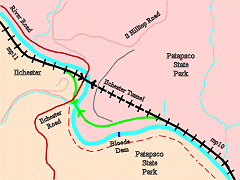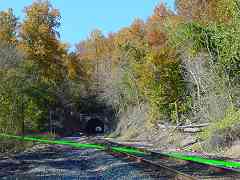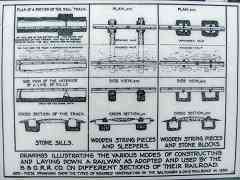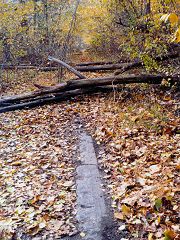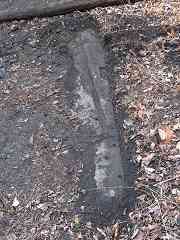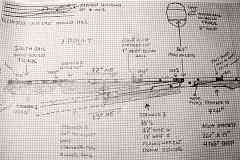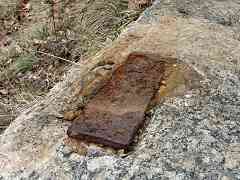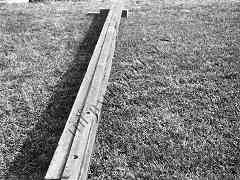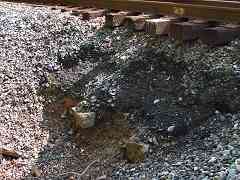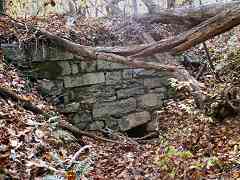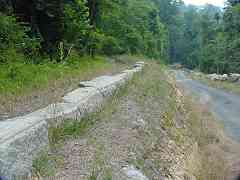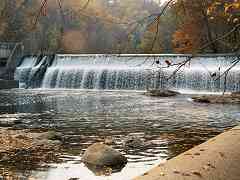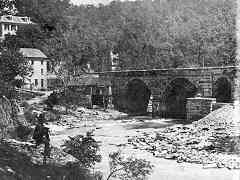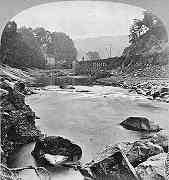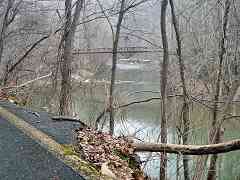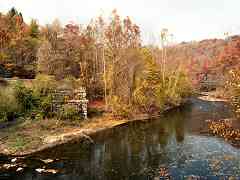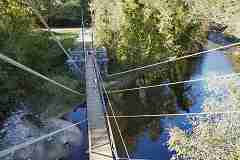|
Easily heard from the path was the crash of water over Bloede Dam.
Bloede is pronounced "Bler-dah" according to a friend of the family of
Victor Bloede, founder of Patapsco water and power companies.
The dam officially opened November 28, 1907, the date upon which its
internal generators began cranking out electricity for the area, enough
that during 1913 the Baltimore Gas & Electric (BGE) Co. acquired it.
According to BGE, the dam's construction was unique in that it was
hollow with the water wheels and generators housed inside. The dam
was upgraded with fish ramps in the 1990s; I am not sure when it
stopped generating power. The concrete pipe on the right is a storm or
sanitary sewer. Bonus points if you spotted the turtle lounging on the rock.
This dam was removed during 2018, see Bloede Dam removal.
With the push to "go green" that effort might have been better spent restoring the
dam's capability to generate hydroelectric power. The popular McKeldin Falls
upstream is unlikely to be removed, so removing Bloede Dam accomplished little.
The invasive snakehead fish has now reached upstream, however.
Courtesy JD Hiteshew below are other views dating from 1973
(the spring after Agnes floods, note the scoured valley and
remains of River Road on left), plus two from 1975 (more flooding,
probably due to the remains of Hurricane Eloise in late September that year):
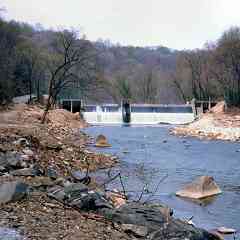
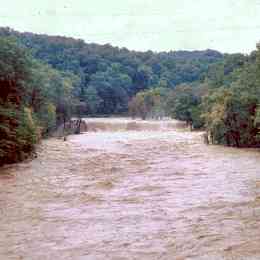
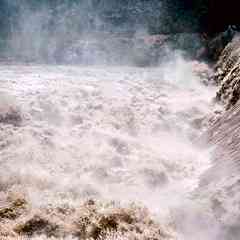
Immediately upstream from here, the river squeezes through a narrowing valley
that amplifies flood effects at the expense of bridges.
| 